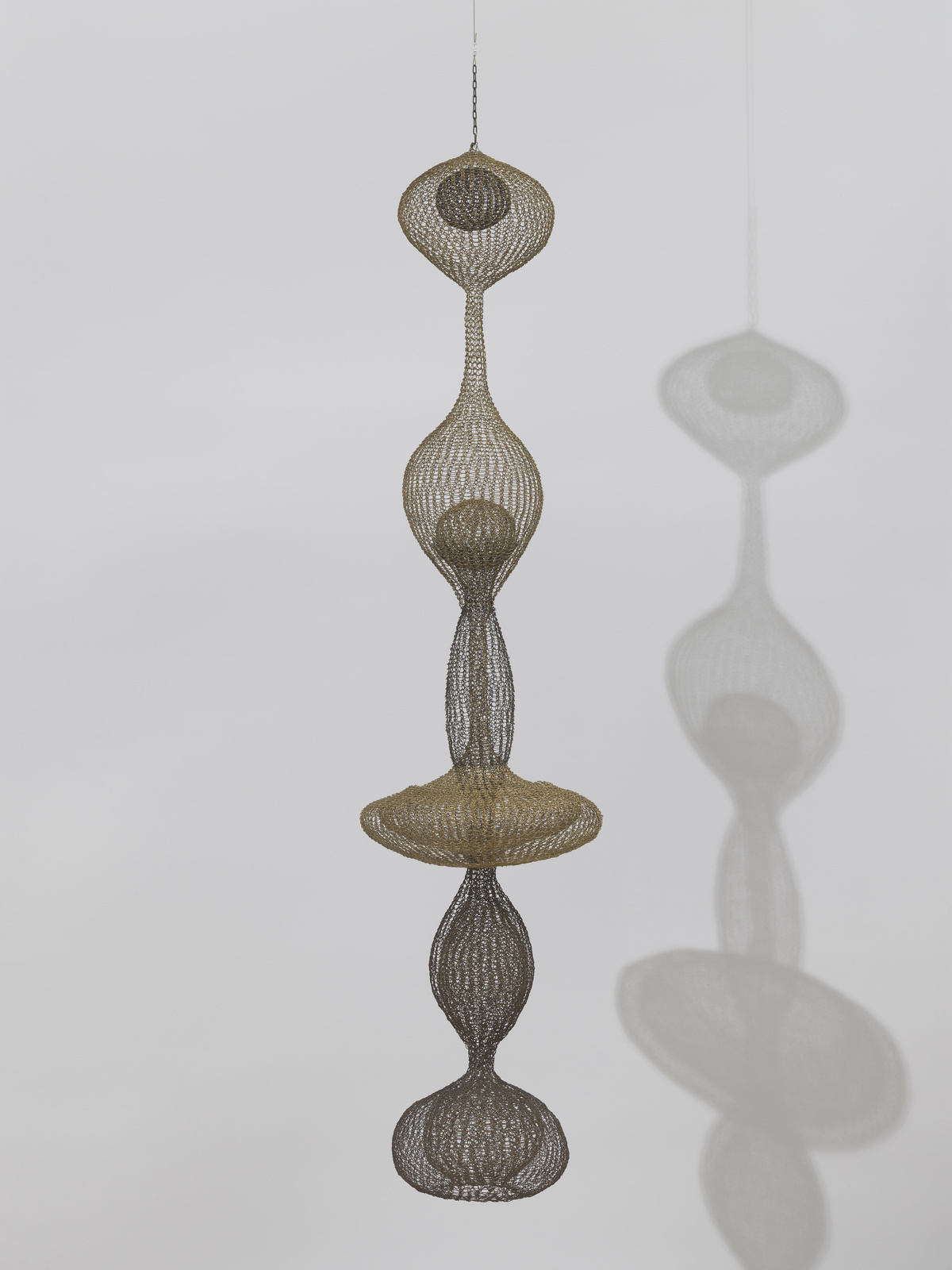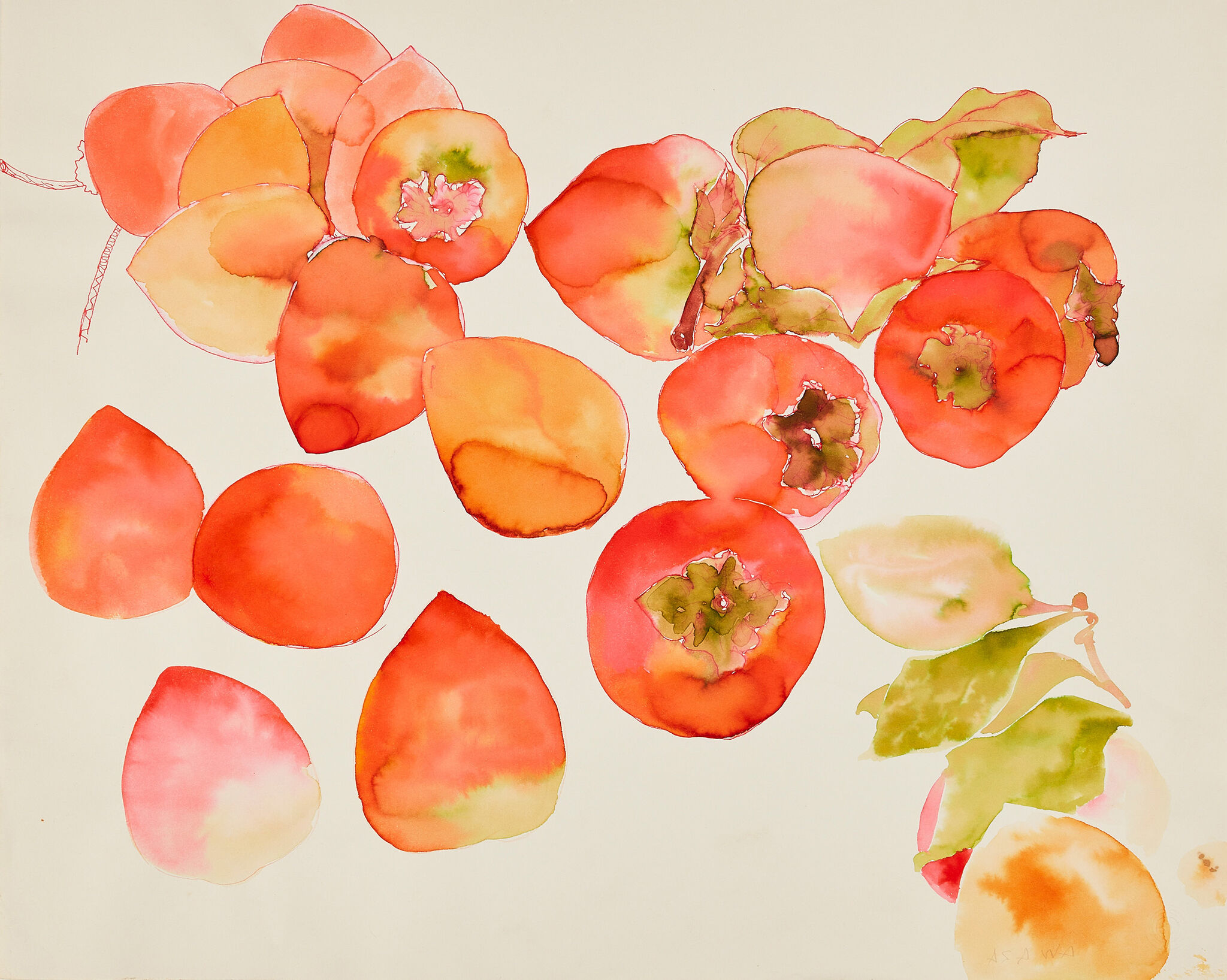Untitled (ZP.16B, Twelve Looped-Wire Sculptural Forms), c. mid-to-late 1950s
Aug 30, 2023
0:00
Untitled (ZP.16B, Twelve Looped-Wire Sculptural Forms), c. mid-to-late 1950s
0:00
Narrator: After Asawa made her wire sculptures, she was often interested in exploring their forms on paper—as she did here. By experimenting with different methods of drawing the sculptures, she found a material that helped her see the sculptures in new ways: screentone. Conservator Clara Rojas-Sebesta.
Clara Rojas-Sebesta: Screentone is a pre-printed plastic self-adhesive material with very high sheen and small patterns, varying patterns, that were used by illustrators in advertising in the 1950s as part of creating illustrations for commercial use. Ruth Asawa takes advantage of these patterns by cutting them into organic shapes that were studies for her sculptures. And by layering varying patterns, she could explore transparency and the way forms change in with a moire pattern.
Kim Conaty: This was a really important part of Asawa's practice, both on paper and in three dimensions.
Narrator: Curator Kim Conaty.
Kim Conaty: She was really interested in the idea of transparency and how one could look at something, but at the same time see space within and beyond it, and thus create relationships between one form and another.


